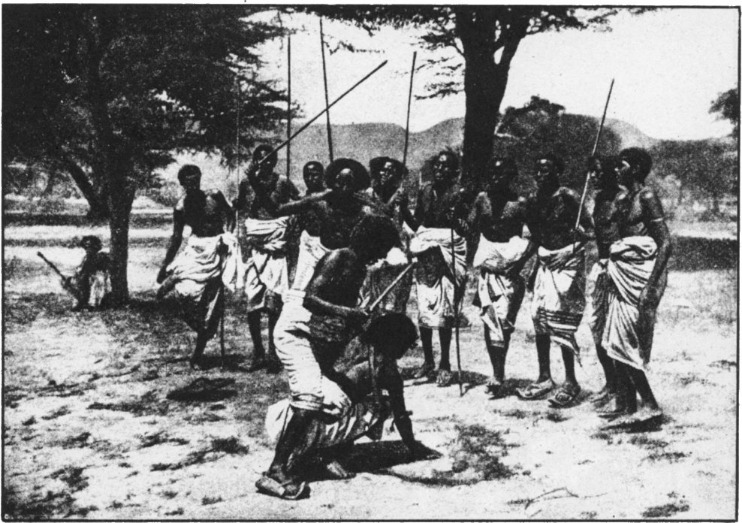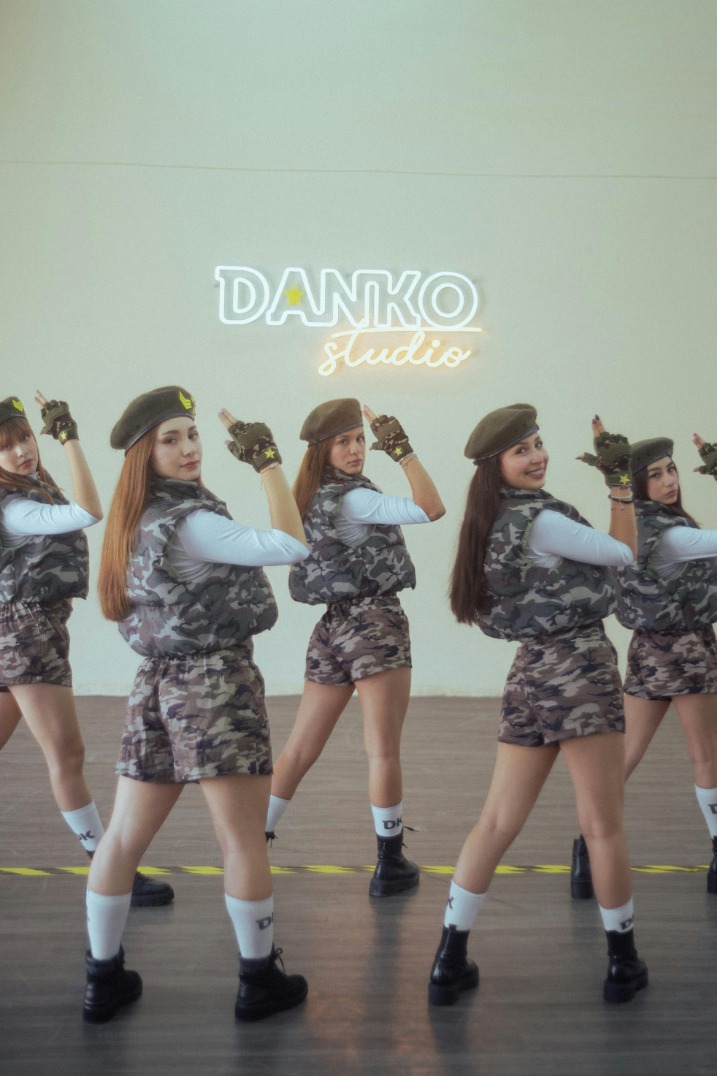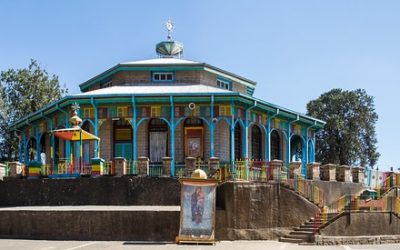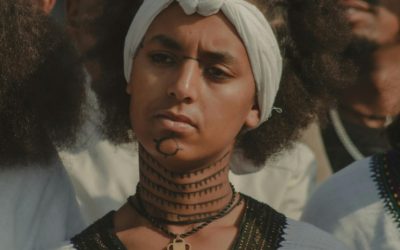Historical Background of Ethiopian Dance
Ethiopian dance is a vibrant and profound expression of the country’s rich cultural heritage, tracing back thousands of years. Rooted in ancient traditions and spiritual practices, Ethiopian dance reflects the diverse history, ethnic diversity, and societal values of its people. Over centuries, these dance forms have evolved, integrating regional influences while preserving their symbolic significance, making Ethiopian dance an essential part of the nation’s cultural identity.
Origins of Traditional Ethiopian Dance
Ethiopian dance has a rich history that dates back thousands of years, embodying the cultural and spiritual essence of the nation’s diverse communities. Traditionally, these dances serve as a means of storytelling, celebration, and religious worship, passed down through generations. The origins of Ethiopian dance are deeply rooted in the country’s ancient civilizations, including the Axumite Empire, where dance was an integral part of ceremonial and social gatherings. Over time, various ethnic groups across Ethiopia developed their own unique dance styles, each reflecting their history, environment, and societal values. These dances are characterized by intricate footwork, rhythmic movements, and vibrant expressions that symbolize different aspects of life, such as fertility, heroism, and communal unity. Today, traditional Ethiopian dance continues to be a vital aspect of national identity, showcasing the country’s rich cultural heritage and historic continuity.
Influence of Ancient Cultures
Ethiopian dance has a rich historical background deeply rooted in the country’s ancient cultures and traditions. It reflects the diverse social, spiritual, and cultural practices of various ethnic groups over thousands of years. These dances have been an essential part of ceremonies, celebrations, and rituals, serving as a means of storytelling and preserving cultural identity.
- Ancient Ethiopia was home to some of the earliest civilizations in Africa, such as the Aksumite Empire, which influenced cultural practices including dance.
- Traditional dances often mimic nature, social hierarchies, and daily life, showcasing the community’s values and beliefs.
- Inscriptions and archaeological findings reveal that dance played a significant role in religious worship and royal ceremonies in ancient times.
- The influence of neighboring cultures, such as Arab, Nubian, and Somali, further shaped Ethiopia’s dance traditions through trade and cultural exchanges.
- Each ethnic group developed unique dance styles, with distinctive movements, instruments, and costumes that have been passed down through generations.
Evolution Through the Centuries
Ethiopian dance has a rich and ancient history that reflects the diverse cultural heritage of the nation. Rooted in traditional rituals, ceremonies, and social gatherings, Ethiopian dance serves as a vital expression of identity and community bonding. Historically, dance in Ethiopia was intertwined with religious practices, marking significant events such as harvests, festivals, and rites of passage.
Throughout the centuries, Ethiopian dance has evolved, influenced by various interactions with neighboring cultures and historical events. The introduction of Christianity and Islam, along with trade and conquest, brought new musical instruments, rhythms, and dance styles, enriching traditional forms. Artistic expressions such as the eskista—the iconic shoulder dance—emerged as distinctive features of Ethiopian culture, showcasing intricate movements and storytelling.
In modern times, Ethiopian dance continues to evolve, blending traditional techniques with contemporary influences. It remains a powerful symbol of national pride and cultural resilience, performed during festivals, official events, and in the diaspora, maintaining its significance across generations. This dynamic evolution underscores Ethiopia’s vibrant cultural landscape and the enduring legacy of its dance traditions.
Regional Dance Styles in Ethiopia
Regional dance styles in Ethiopia reflect the diverse cultures and histories of the country’s many ethnic groups. These vibrant traditional dances are a vital part of Ethiopian celebrations, ceremonies, and social gatherings, showcasing unique movements, costumes, and rhythms. Each region boasts its own distinct dance forms that highlight local customs and expressive artistry, making Ethiopian dance a rich tapestry of cultural identity.

Oromo Dance Forms
Regional dance styles in Ethiopia reflect the rich cultural diversity of the country, with each ethnic group showcasing its unique traditions and expressions through dance. Oromo dance forms are among the prominent cultural expressions, characterized by lively movements and rhythmic footwork that convey social, historical, and spiritual themes. These dances often involve energetic jumps, synchronized clapping, and flowing arm gestures, highlighting community bonding and storytelling. Oromo dances are performed during festivals, ceremonies, and social gatherings, serving as a vital link to their cultural identity and heritage. Overall, Ethiopian dance traditions, including the Oromo dance forms, play a significant role in preserving and celebrating the nation’s diverse cultural landscape.
Amhara Dance Traditions
Regional dance styles in Ethiopia showcase a rich tapestry of cultural heritage and diverse traditions, with each region possessing unique movements and rhythms that reflect their history and identity. The Amhara dance traditions are particularly notable for their vibrant and energetic performances that emphasize storytelling, social bonding, and cultural pride. These dances often feature lively footwork, coordinated hand movements, and sometimes involve singing and drumming, making them a central aspect of community celebrations and ceremonies. Specific Amhara dances such as the Eskista are famous for their intricate shoulder movements, demonstrating the community’s artistic expression and historical significance. Overall, Ethiopian dance forms, especially those from the Amhara region, reveal the depth and vibrancy of Ethiopia’s cultural landscape, highlighting its enduring traditions and artistic creativity.
Tigray and Eritrean Influences
Regional dance styles in Ethiopia showcase a rich tapestry of cultural diversity, with each region highlighting unique movements, rhythms, and attire. In Tigray, traditional dances such as the “Ateraw” feature energetic footwork combined with lively hand gestures, reflecting the town’s historical significance and local customs. The dance often accompanies celebrations and rituals, emphasizing community unity and heritage.
Eritrean influences are also prominent in Ethiopian dance, especially in regions bordering Eritrea. The Eritrean-influenced dances are characterized by intricate hip movements, synchronized group formations, and the use of traditional drums and string instruments. These styles emphasize expressiveness and storytelling, often depicting historical narratives or social themes.
Overall, the dance traditions of Ethiopia embody the country’s diverse ethnic backgrounds, with Tigray and Eritrean influences contributing to a vibrant and dynamic dance culture that continues to thrive in contemporary celebrations and performances.
Southern Ethiopian Dances
Southern Ethiopian dances are a vibrant expression of the diverse cultures and traditions found in the region. These dance styles are characterized by their energetic movements, rhythmic footwork, and colorful costumes, reflecting the rich cultural heritage of the communities. Each ethnic group in southern Ethiopia has its unique dance form that often accompanies communal celebrations, rituals, and festivals. For example, the Oromo people perform the “Siiqqee” dance, marked by lively stomping and dynamic gestures that symbolize social unity and cultural pride. The Hamer people are known for their “Donga” dance, which involves intricate movements and the use of traditional musical instruments. These dances serve as a vital link to the history and identity of the southern Ethiopian peoples, showcasing their creativity, spirituality, and social bonds. Overall, regional dance styles in southern Ethiopia are an essential aspect of the cultural landscape, offering insight into the area’s traditional lifestyles and communal values.
Key Characteristics of Ethiopian Dance
Ethiopian dance is a vibrant and expressive art form that reflects the rich cultural heritage of the country. It is characterized by rhythmic movements, intricate footwork, and the use of traditional musical instruments. These dances often depict everyday life, social customs, and spiritual beliefs, making them an essential aspect of Ethiopian identity. The dynamic and energetic nature of Ethiopian dance showcases the diversity and creativity of its people.
Rhythmic Movements and Gestures
Ethiopian dance is renowned for its vibrant rhythms, expressive movements, and cultural significance. It reflects the diverse traditions found across the country, with each community showcasing unique styles and gestures. The dance typically features lively, repetitive rhythmic patterns that are deeply rooted in traditional music, emphasizing the importance of percussion and vocal expressions. Movements are often characterized by intricate footwork, synchronized body motions, and dynamic hand gestures that convey stories, social values, or spiritual beliefs. Participants frequently utilize gestures such as gestures, head nods, and arm movements to communicate emotions and cultural narratives. Ethiopian dance emphasizes community participation, with dancers often performing in groups, maintaining a strong connection to the collective identity and heritage. Overall, the dance form combines rhythmic precision with expressive gestures, making it a vital aspect of Ethiopia’s cultural expression and social gatherings.
Use of Costumes and Accessories
Ethiopian dance is renowned for its vibrant rhythms, energetic movements, and cultural significance. It often features intricate footwork, synchronized group performances, and expressive hand gestures that reflect the country’s diverse traditions. Each dance style embodies the history, social values, and spiritual beliefs of different Ethiopian communities.
Costumes and accessories play a vital role in Ethiopian dance, enhancing the visual impact and cultural authenticity of performances. Traditional clothing often includes colorful garments made from locally woven fabrics, adorned with embroidery and decorative patterns. Accessories such as jewelry, headpieces, and waistbands are commonly used to emphasize movements and signify social or ceremonial status. These elements collectively showcase Ethiopia’s rich artistic heritage and lend a distinctive aesthetic to its dance traditions.
Music and Instruments Accompanying the Dances
Ethiopian dance is characterized by its lively, rhythmic movements that often reflect the cultural and social traditions of various ethnic groups. Dances in Ethiopia are typically performed during celebrations, ceremonies, and festivals, showcasing unique styles and gestures. The music accompanying these dances features distinctive scales and chanting patterns that evoke emotional expression and communal participation. Instruments play a vital role in setting the rhythm and mood, including traditional drums like the krar, masenqo, and begena. Instruments such as flutes, masenqo, and various percussion tools complement the dance movements, creating a vibrant and dynamic cultural experience. The dance, music, and instruments together embody Ethiopia’s rich cultural identity and oral heritage, highlighting regional diversity and historical influences.
Cultural Significance of Dance in Ethiopia
Dance holds a vital place in Ethiopian culture, serving as a powerful expression of identity, history, and social connection. It is deeply intertwined with religious ceremonies, celebrations, and daily life, reflecting the rich diversity of Ethiopia’s many ethnic groups. Through its vibrant movements and traditional rhythms, dance preserves cultural heritage and fosters community unity, making it an essential aspect of Ethiopian societal life.
Rituals and Ceremonies
Dance holds a profound cultural significance in Ethiopia, serving as a vital expression of identity, history, and social values. It is often intertwined with various rituals and ceremonies that mark important life events and community gatherings across the country.
- Celebration of Life Events: Ethiopian dances are performed during weddings, births, and coming-of-age ceremonies, symbolizing joy, unity, and continuity of tradition.
- Religious and Spiritual Practices: Many dances are performed as offerings or expressions of devotion during religious festivals and rituals, reflecting Ethiopia’s diverse spiritual heritage.
- Seasonal and Agricultural Ceremonies: Dance plays a role in rituals related to planting and harvest seasons, fostering community participation and gratitude.
- Cultural Preservation and Identity: Traditional dances serve as a means to preserve Ethiopia’s rich cultural history, showcasing regional diversity and ancestral stories.
- Social Cohesion and Transmission of Knowledge: Dances facilitate social bonding and are often passed down through generations, maintaining cultural continuity amidst modern influences.
Social and Community Bonding
Dance in Ethiopia holds a profound cultural significance as it serves as a vital expression of the country’s rich heritage and diverse traditions. It is a powerful medium through which stories, history, and social values are conveyed from generation to generation. Ethiopian dance often embodies spiritual, celebratory, and communal elements, reflecting the unique identity of various ethnic groups.
Furthermore, dance plays a crucial role in fostering social and community bonding within Ethiopian society. It brings people together during festivals, ceremonies, and social gatherings, creating a sense of unity and shared identity. Participating in dance activities allows individuals to connect with one another, strengthen community ties, and uphold cultural continuity, making it an integral part of social life in Ethiopia.
Celebrations and Festivals
Dance holds a profound cultural significance in Ethiopia, embodying the country’s rich history, diverse traditions, and social values. It serves as a vital form of expression during various rites of passage, community gatherings, and spiritual ceremonies, helping to strengthen social bonds and preserve cultural identity.
Throughout Ethiopia’s numerous celebrations and festivals, dance plays a central role in energizing festivities and conveying cultural stories. During events such as Enkut Athalin and Timket, traditional dances are performed with vibrant costumes and rhythmic movements, showcasing Ethiopia’s ethnolinguistic diversity. These performances not only entertain but also honor ancestors, promote unity, and celebrate important historical moments.
In many Ethiopian communities, dance is also a means of passing down oral traditions, folklore, and ancestral histories from generation to generation. Whether performed during religious festivals, national holidays, or local ceremonies, dance continues to be a powerful expression of Ethiopia’s cultural heritage and communal spirit.
Modern Ethiopian Dance Scene
The modern Ethiopian dance scene is a vibrant blend of traditional rhythms and contemporary influences, showcasing the dynamic cultural heritage of the country. It has evolved through the years, integrating new styles while maintaining deep connections to Ethiopia’s rich history. Today, Ethiopian dancers and choreographers are gaining international recognition, pushing the boundaries of creativity and innovation within the dance community.
Contemporary Dance Groups and Performers
The modern Ethiopian dance scene is a vibrant and evolving landscape that reflects the country’s rich cultural heritage while embracing contemporary influences. Contemporary dance groups and performers in Ethiopia are exploring new forms and styles, blending traditional Ethiopian movements with modern techniques to create innovative performances. Renowned dance companies such as the Ethiopian Dance Theatre and individual performers like Sintayehu Lemma are gaining recognition both locally and internationally for their artistic creativity and dedication to promoting Ethiopian dance culture. These artists often incorporate storytelling, social themes, and experimental choreography, contributing to a dynamic and diverse dance community that continues to grow and inspire new generations.
Fusion with Modern Music Genres
The modern Ethiopian dance scene is a vibrant and dynamic fusion of traditional movements and contemporary influences, reflecting the country’s rich cultural heritage while embracing global musical trends. Artists and dancers often blend traditional Ethiopian dance elements with modern genres such as hip-hop, reggae, and electronic music, creating innovative performances that appeal to diverse audiences. This fusion not only revitalizes traditional dance forms but also fosters a sense of cultural pride and artistic experimentation among young dancers. As Ethiopia continues to grow as a hub for artistic expression, the modern dance scene exemplifies the seamless integration of history and innovation, making it a compelling aspect of Ethiopia’s contemporary cultural landscape.
Role of Dance in Ethiopian Media and Festivals
The modern Ethiopian dance scene is a vibrant blend of traditional rhythms and contemporary styles, reflecting the country’s rich cultural diversity and dynamic artistic evolution. Contemporary Ethiopian dancers and choreographers are increasingly experimenting with new forms, integrating modern music, popular culture, and innovative movement techniques to attract younger audiences and promote cultural heritage. Esteemed dance festivals and events serve as platforms for showcasing both traditional and modern dance forms, fostering creative exchange and cultural pride.
Dance plays a significant role in Ethiopian media, playing a key part in music videos, television shows, and social media content that reach widespread audiences. It is used as a powerful medium to express social messages, celebrate cultural identity, and entertain viewers. Media platforms often highlight dance performances during national celebrations, and dance-related content has become popular for its ability to connect viewers emotionally and culturally.
Festivals in Ethiopia, such as the Timket, Meskel, and Gadaa festivals, often feature traditional dances that are integral to their rituals and celebrations. These events serve as important cultural gatherings where communities come together to perform, preserve, and transmit their dance traditions across generations. Modern dance festivals also increasingly showcase contemporary Ethiopian dance, encouraging innovation while honoring historical roots, thus playing a vital role in maintaining Ethiopia’s vibrant dance heritage.
Influence of Ethiopian Dance Internationally
Ethiopian dance has gained international recognition for its vibrant rhythms, unique movements, and cultural significance. As a vital aspect of Ethiopian heritage, these dances showcase the country’s rich history and diverse traditions, captivating audiences worldwide. Through performances, festivals, and cultural exchanges, Ethiopian dance continues to influence and inspire artists and enthusiasts on global stages.
Cultural Exchange and Collaborations
Ethiopian dance has gained international recognition, serving as a vibrant expression of the country’s rich cultural heritage. Its unique movements and rhythms have captivated audiences worldwide, showcasing Ethiopia’s diverse traditions through performances and festivals. The global interest in Ethiopian dance has fostered cultural exchange, allowing artists from different backgrounds to connect and learn from each other. Collaborations between Ethiopian dancers and international performers have led to innovative fusion works that highlight the universality of dance as a language of connection. These exchanges not only promote Ethiopia’s cultural identity but also broaden the global understanding of African dance traditions, strengthening intercultural ties and promoting appreciation for Ethiopia’s artistic contributions.
Participation in Global Dance Festivals
Ethiopian dance has gained significant international recognition through active participation in global dance festivals, showcasing its rich cultural heritage to diverse audiences. These festivals serve as platforms for Ethiopian artists to demonstrate the unique rhythms, traditional movements, and storytelling elements intrinsic to Ethiopian dance. As a result, Ethiopian dance has influenced and inspired dancers worldwide, leading to increased appreciation and incorporation of its distinctive styles into contemporary and fusion choreographies. Participation in international events also fosters cross-cultural exchanges, promoting deeper understanding and respect for Ethiopia’s traditional arts. This global visibility not only elevates the profile of Ethiopian dance but also encourages preservation and innovation within the tradition, ensuring its relevance and vibrancy on the world stage.
Promotion of Ethiopian Culture through Dance
Ethiopian dance has gained notable international recognition, serving as a vibrant symbol of the country’s rich cultural heritage. Through performances at global festivals, cultural exchanges, and online platforms, Ethiopian dance has captivated audiences worldwide, fostering greater awareness and appreciation of Ethiopia’s diverse traditions. The dynamic movements and rhythmic complexity of Ethiopian dance showcase the nation’s history, social values, and artistic expression, acting as a powerful medium for promoting Ethiopian culture on the global stage. As dancers and cultural ambassadors continue to share their craft internationally, Ethiopian dance not only enhances cultural pride but also promotes intercultural understanding and appreciation among diverse communities.





0 Comments